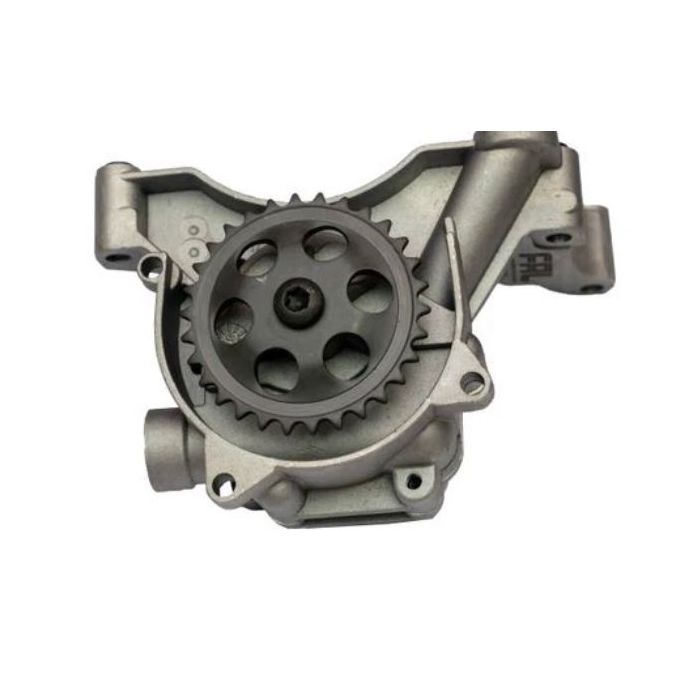How a Clp Engine Can Enhance Performance in Different Industries
The advent of CLP engines marks a substantial change in operational efficiency throughout numerous sectors, driven by their ability to enhance gas intake and minimize downtime. As organizations increasingly prioritize sustainability along with performance, the role of CLP engines becomes even much more essential.
Introduction of CLP Engines
CLP engines, or Continuous Fluid Propellant engines, represent a considerable improvement in propulsion innovation, specifically for space applications. These engines utilize a constant feed system that permits for the sustained expulsion of propellant, causing improved efficiency and efficiency contrasted to conventional solid or hybrid propulsion systems. By keeping a consistent circulation of liquid propellant, CLP engines can attain a lot more accurate thrust control, which is crucial for steering spacecraft in different goal scenarios.
The layout of CLP engines integrates innovative products and innovative gas administration systems. clp engine. This results in minimized weight and raised dependability, important factors for long-duration area missions. In addition, the continuous procedure reduces the threat of burning instability, a typical obstacle in conventional rocket engines.

Advantages in Manufacturing
The manufacturing of Continual Fluid Propellant (CLP) engines offers numerous remarkable benefits that boost both performance and cost-effectiveness. Among the main benefits is the streamlined production procedure, which lowers the intricacy connected with conventional propulsion systems. By utilizing liquid propellant, suppliers can accomplish higher precision in engine performance, leading to maximized power output and reduced waste.
In addition, CLP engines promote a greater level of modularity, permitting simpler integration right into different manufacturing lines. This flexibility can dramatically reduce lead times and boost general functional adaptability. The use of CLP technology additionally has a tendency to reduce the demand for substantial maintenance as a result of less moving components, which equates right into minimized downtime and operational expenses.

Applications in Logistics
Leveraging Continual Fluid Propellant (CLP) engines in logistics offers considerable advantages in operational performance and reliability. These engines offer a durable service for different transport requirements, allowing the seamless motion of goods across large distances. The inherent style of CLP engines permits constant power outcome, which equates into smoother and more predictable transport timetables.
Among the crucial applications of CLP engines in logistics remains in durable products transport, where they can drive both ground and airborne automobiles. Their capability to preserve high efficiency under differing lots problems ensures that delivery timelines are fulfilled, consequently improving client contentment. Additionally, CLP engines can be integrated into automated logistics systems, promoting real-time monitoring and enhancing route planning.
Furthermore, the longevity of CLP engines lowers upkeep downtime, enabling logistics business to maximize their operational capacities. This is specifically valuable in warehousing procedures, where effectiveness in taking care of and transferring products is essential. As logistics continues to advance, the assimilation of CLP engines stands for a forward-thinking strategy that not just boosts efficiency but additionally sustains the sector's expanding demands for integrity and speed.
Effect On Power Effectiveness
How do Constant Liquid Propellant (CLP) engines boost energy performance in transport? CLP engines utilize a regular circulation of fluid gas, maximizing burning processes and preserving a secure thrust output. This design decreases energy losses connected with typical burning engines, where gas distribution can differ and lead to ineffectiveness.
The continuous procedure of CLP engines permits a more efficient thermal cycle, resulting in greater certain impulse compared to traditional engines. clp engine. This converts to decreased gas intake for the same amount of work done, significantly decreasing operational prices across numerous transport fields, consisting of aviation and maritime sectors
Furthermore, the capacity of CLP engines to maintain ideal performance under varying tons conditions minimizes the need for constant velocity and slowdown, even more improving gas effectiveness. Boosted energy efficiency not just adds to cost financial savings but likewise results in decrease greenhouse gas exhausts, straightening with worldwide sustainability goals.
Future Trends and Innovations
Emerging advancements in Continuous Liquid Propellant (CLP) engine technology promise to change the landscape of transportation performance and sustainability. As industries pivot toward greener alternatives, CLP engines stand visit this website at the center, integrating innovative products and layout methodologies that enhance efficiency while lessening ecological impact.
One of one of the most appealing fads is the fostering of hybrid systems that incorporate CLP engines with renewable resource sources. This synergy can optimize fuel usage and minimize emissions, straightening with global sustainability goals. Recommended Site Additionally, developments in computational liquid characteristics (CFD) are helping with the design of even more aerodynamically effective engines, bring about decreased drag and boosted fuel efficiency.
Furthermore, the advancement of smart surveillance systems is readied to enhance functional efficiencies. These systems utilize data analytics and IoT innovation to optimize engine efficiency in real-time, guaranteeing that the engines run within their most reliable specifications.
As research remains to check out different propellant solutions-- such as biofuels and synthetic fuels-- the future of CLP engines looks encouraging. By utilizing these advancements, sectors can not only improve their effectiveness however also contribute significantly to a cleaner, more sustainable future in transport.
Conclusion
In conclusion, CLP engines stand for a substantial innovation in effectiveness across multiple industries. Their capacity to maximize gas intake and minimize operational expenses, incorporated with a continual feed system, improves power output and functional reliability. The combination of innovative products and less relocating parts browse around here reduces maintenance demands, while alignment with sustainability objectives placements CLP engines as a pivotal innovation for the future. Continued innovation in this field promises further enhancements in effectiveness and ecological performance.